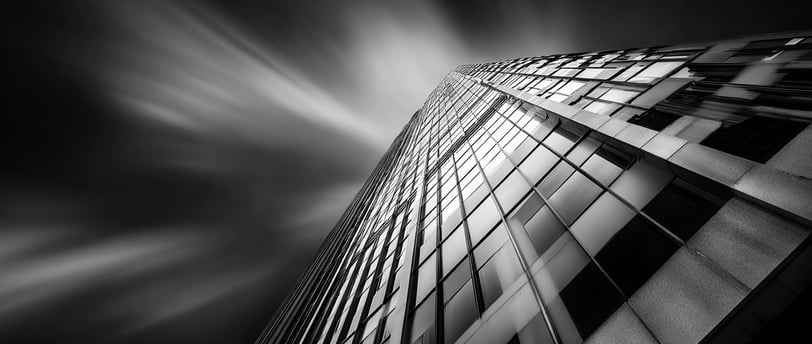Discover Art for Every Space — From Collector Prints to Curated Digital Downloads
How to Photograph Architecture in Black and White
BLACK AND WHITE PHOTOGRAPHY INSIGHTS
Gary Washington
3 min read


Why Black and White Architecture Photography Deserves a Different Eye
Photographing architecture in black and white isn’t just a matter of switching your camera to monochrome. It requires seeing the world through structure, rhythm, and light. While color highlights materials and mood, black and white reveals form, contrast, and story.
This guide walks you through how to photograph architecture with intention — capturing not just buildings, but emotion in design.
Step 1 – Study the Structure Before You Shoot
Great black and white architecture photography begins with observation. Before you press the shutter, walk around the building. Examine how lines intersect. Where shadows fall. How textures interact with light.
Ask yourself:
What’s the dominant shape or rhythm here?
Where does light naturally lead the eye?
What’s the emotional tone — calm, dramatic, bold?
This mindset turns documentation into storytelling.
Step 2 – Shoot in Natural Light, But Learn to Bend It
Black and white thrives on contrast. Early morning and late afternoon provide longer shadows and more texture, while overcast skies help reveal subtle tones.
Ideal Lighting Conditions
Golden Hour: Adds soft depth and beautiful contrast
Midday: Sharp, high-contrast shadows for drama
Overcast: Perfect for smooth detail without harsh light
Use natural light to your advantage, but don’t be afraid to experiment with long exposures, shadows from nearby structures, or artificial light when needed.
Step 3 – Choose the Right Lens and Perspective
A wide-angle lens lets you capture the full scale of a structure, while a tilt-shift lens helps correct perspective distortion. But lens choice is more than technical — it’s emotional.
For storytelling:
Low angles make buildings feel powerful or imposing
Symmetrical head-on shots convey balance and intention
Tight crops highlight detail and intimacy
The best images mix precision with feeling.
Step 4 – Use Manual Mode for Complete Control
In black and white photography, the tones between pure black and white are everything. Use manual mode to control:
Shutter speed for motion or sharpness
Aperture for depth of field
ISO to manage grain without losing tone detail
Don’t rely on automatic settings. The camera doesn’t know your artistic intent — you do.
Step 5 – Pre-Visualize in Monochrome
Train your eye to see the world in grayscale. Many modern cameras offer black and white preview modes — use them to build intuition. This helps you anticipate how colors will translate into shades of gray.
Ask:
Will that red brick wall become dull and flat?
Will the sky become too bright without clouds?
Will this shadow feel too soft once color is removed?
Seeing in black and white is a skill — one that separates average photos from striking ones.
Step 6 – Post-Processing with Purpose
A good photo becomes a great one in post-production. Avoid using one-click B&W filters — instead, make nuanced adjustments.
What to Adjust in Post
Brightness & contrast: Create drama without losing detail
Curves: Control tonal range precisely
Clarity & texture: Highlight stone, metal, and materials
Dodging & burning: Enhance light direction subtly
Your goal is to guide the eye, not overpower it.
Bonus Tips for Stunning Results
Use a tripod for architectural symmetry and long exposures
Include sky only if it adds to the composition
Experiment with reflections, grids, and negative space
Always shoot in RAW for full tonal control
Avoid over-editing — let the architecture breathe
Black and white architecture photography is more about restraint than embellishment.
Final Thoughts: When Buildings Become Portraits
To photograph architecture in black and white is to listen to its silence. Every wall, column, and shadow holds a visual rhythm. Your job is to frame it with care.
Whether you're an artist capturing your city or a collector understanding how these works are made, the beauty of this genre lies in its balance of geometry and emotion.
In the right hands, a building becomes a portrait.
Want to See the Art Behind the Technique?
Visit our gallery to explore black and white architecture photography crafted with every principle in this guide — minimal, meaningful, and designed to speak through silence.
Find out what defines a great image in What Makes a Good Black and White Architectural Photograph?
Mr. Washington Gallery
Mr. Washington Gallery showcases striking black and white architectural photography and fine art prints. Rooted in timeless design and thoughtful composition, each piece invites reflection, storytelling, and a deeper connection to the built world.
Quick links
© 2025. All rights reserved.
